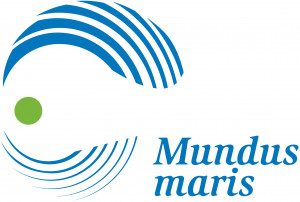This was the motto of an invited diner talk at the French-speaking Cercle Europa meeting in the heart of Brussels once a month and engaging with key topics of political and cultural life. Braving snow and icy winds the ladies flocked all the same to their monthly gathering on 21 January 2013 to the Grand Sablon.
Only superficially could the title of the evening have appeared out of tune with the themes and renowned speakers gracing the list of previous events. Not so, confirmed Jacqueline Rudolph of Cercle Europa, who underlined the importance of the reform process of the Common Fisheries Policy and its application in the EU Member States. She was seconded by President Marie-Paule Wagenbaur.

The key facts in conjunction with the three major threats to the oceans, now at global scale, were presented by Cornelia E Nauen of Mundus maris:
(a) Overfishing: overfishing destabilises marine and coastal ecosystems and reduces their productivity; unselective fishing methods destroy habitat, produce undesirable bycatch and are economically costly to taxpayers, who loose up to an estimated $35 billion in subsidies and thus pay excessively for fisheries, which are not even sustainable. Unjustifiably marginalised small-scale fisheries should be part of the answer to this threat as they produce more than industrial fisheries according to recent research, use less energy, often use more selective and less damaging gear and create more jobs.
(b) Climate change: Climate change is first felt through the thermic expansion of the oceans; the warming pushes e.g. corals to the borderline of their temperature tolerance and already affects bleaching. Warming oceans means also that less oxygen is disolved in the water, thus progressively preventing big gill-breathing animals, such as adult tuna, from living in surface water in the tropics. We observe, indeed, a general poleward trend in the distribution patterns of those marine organisms that can move. Climate change is also associated with the acidification of the oceans, which have already absorbed about 50% of the anthropogenically produced CO2. As the seawater gets more acidic, organisms such as planktonic algae, corals and molluscs find it harder to build their calcareous skeletons.

(c) Marine litter: A large percentage of marine litter is made of plastics, much of land-based origin. With time it fragments. By now we find marine litter in large quantities in all oceans, at all depths. Microplastic is a particular threat to marine life and seabirds as far away as Midway Island in the Pacific have been found dying from starvation with stomachs full of debris. Sunscreens, pharma products and micro-fibres released from cloths as well as the toxic molecules set free from fragmenting plastics may all affect the marine food web and pose long-term health risks to human consumers at their top. For more details on marine litter, click here.
The implications of these threats were explored in an interactive conversation with the very active participants. They were shocked to learn about the massive bycatch and habitat destruction particularly in shrimp and other bottom trawl fisheries. They had also not been aware of some of the other threats, at least not of their extent. Digesting the information they were wondering what could be done, including in the political arena, to change attitudes and policies so that further damage be averted.
From their own experiences in different professional fields, they commented and suggested additional aspects for consideration in marshalling a broader front in favour of protecting the oceans from unsustainable practices. The participants were very favourable towards the education and information efforts, even when these tend to be longer-term responses to the current crisis.

They understood that multiple interdependencies did not always allow simple recipees to be successful. All measures that can be taken have some unintended and undesirable consequences, so that careful weighing of options and monitoring of effects are important to maximise the desirable outcomes and minimise any negative side-effects. This is why narrow sectoral perspectives should be avoided as they tend not to take into account the interaction with other sectors. They have therefore limited capacity to produce lasting solutions.
They were unanimously in favour of protecting baby fish as the one measure which was both intuitively logical and likely to have a large positive impact throughout marine ecosystems. Click here for the powerpoint used at least partially during the conversation (in French).
Los mariscos que comemos
- World Food Day 2024, Joint Webinar with Fish Party
- Relator Especial de la ONU sobre el derecho a la alimentación
- Audiencia del Parlamento Europeo sobre la iniciativa ciudadana de la UE para detener el corte de aletas de tiburones
- Keynote at the ‘Feed the Future – Innovation Lab for Fish’
- Seminario web de la FAO ‘Peces pequeños y de bajo coste: del cebo al plato’, 15-16/02/2021
- Disfrute de deliciosos y sostenibles pescados y mariscos con los talleres de Mundus maris
- Chiloé, o: Los desastres de Salmonopoly
- Seafood Symposium – From Fisheries to Foodies, 27 April 2015
- Baltic students concerned about sustainable foods, Rogow, Poland, 15-19 April 2015
- From plates to fuel – the controversial seaweed boom in Chile
- Khazan – Traditional coastal zone management in Goa, India
- Environmentally conscious consumer behaviour in food – what can I do?
- Save baby fish or Point ‘n’ kill?
- “Inseparable” – Fish sustainability campaign celebrates event in Athens
- Respetar la talla mínima de los peces ¿Qué dicen los comerciantes de pescado en el Senegal?
- The Mundus maris campaign in the urban markets in Dakar
- Let’s save the Oceans! – Cercle Europa invites
- International Study Group Brussels: Save the Seas!
- Mercado San Miguel in Central Madrid
